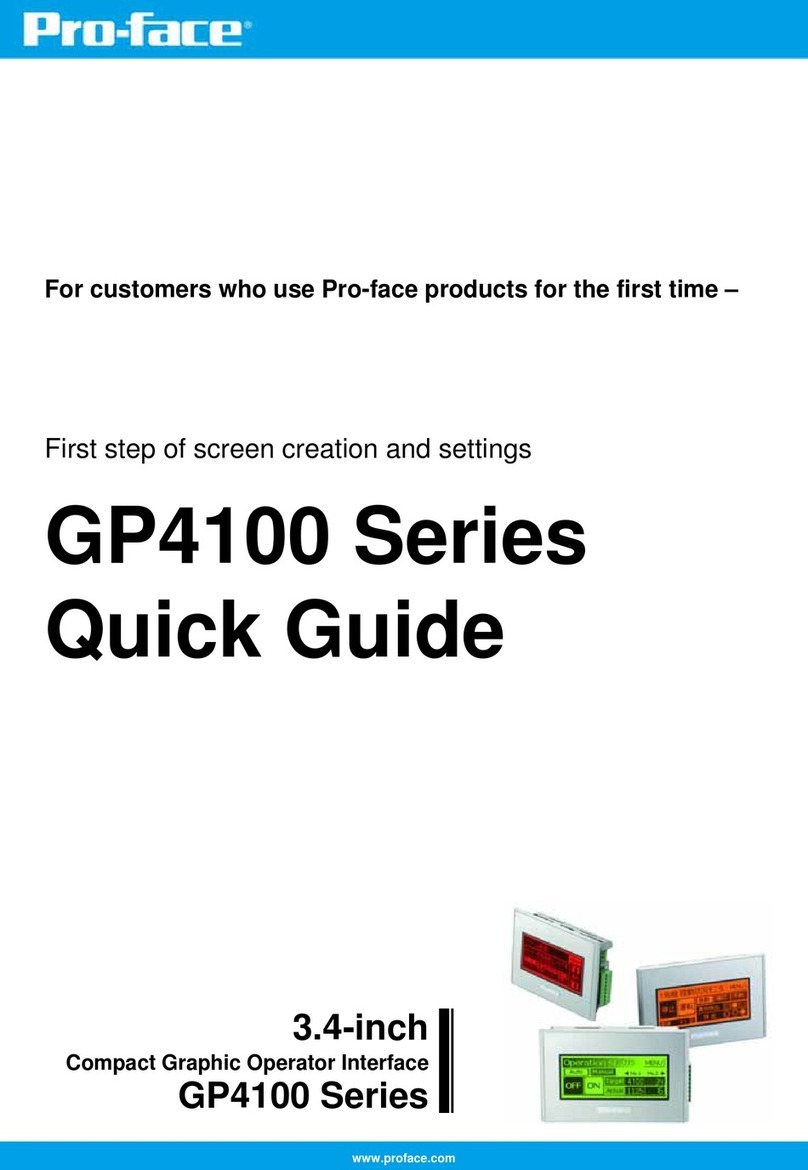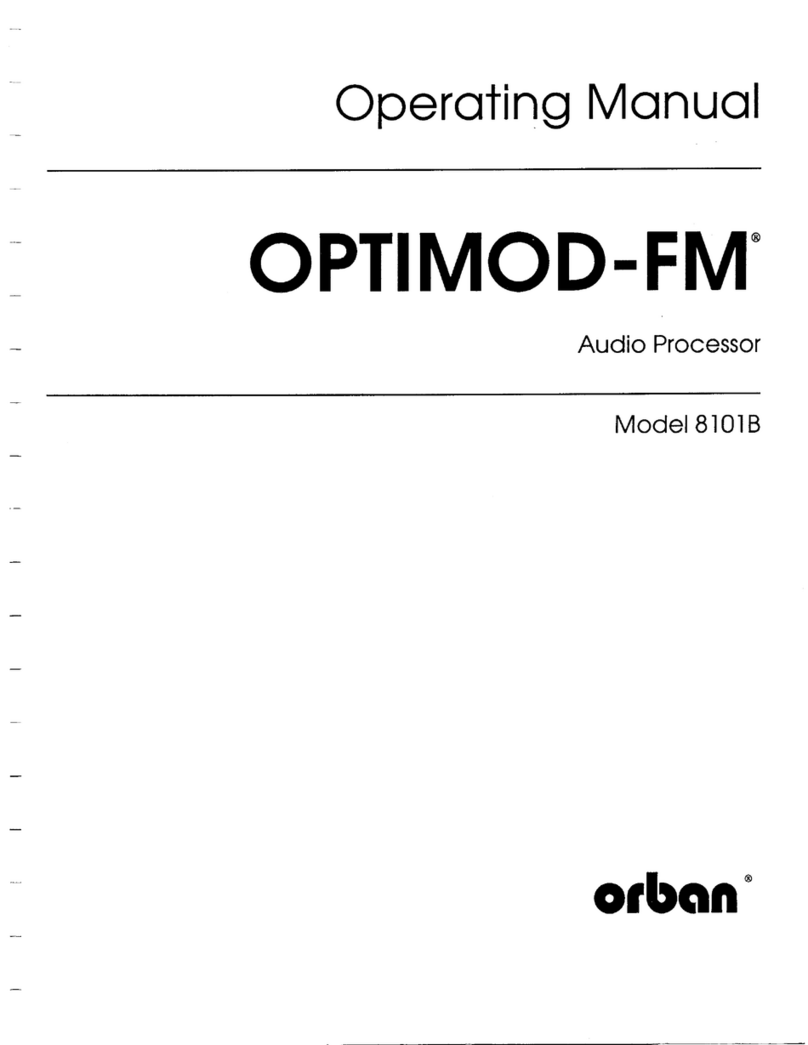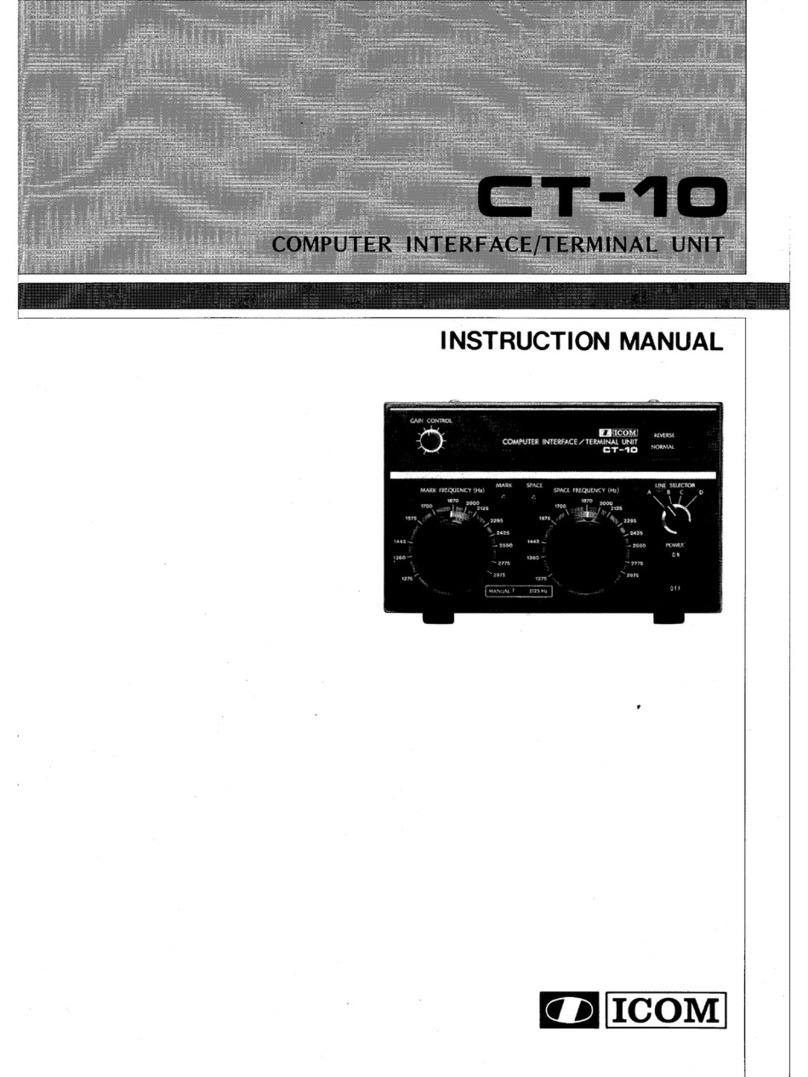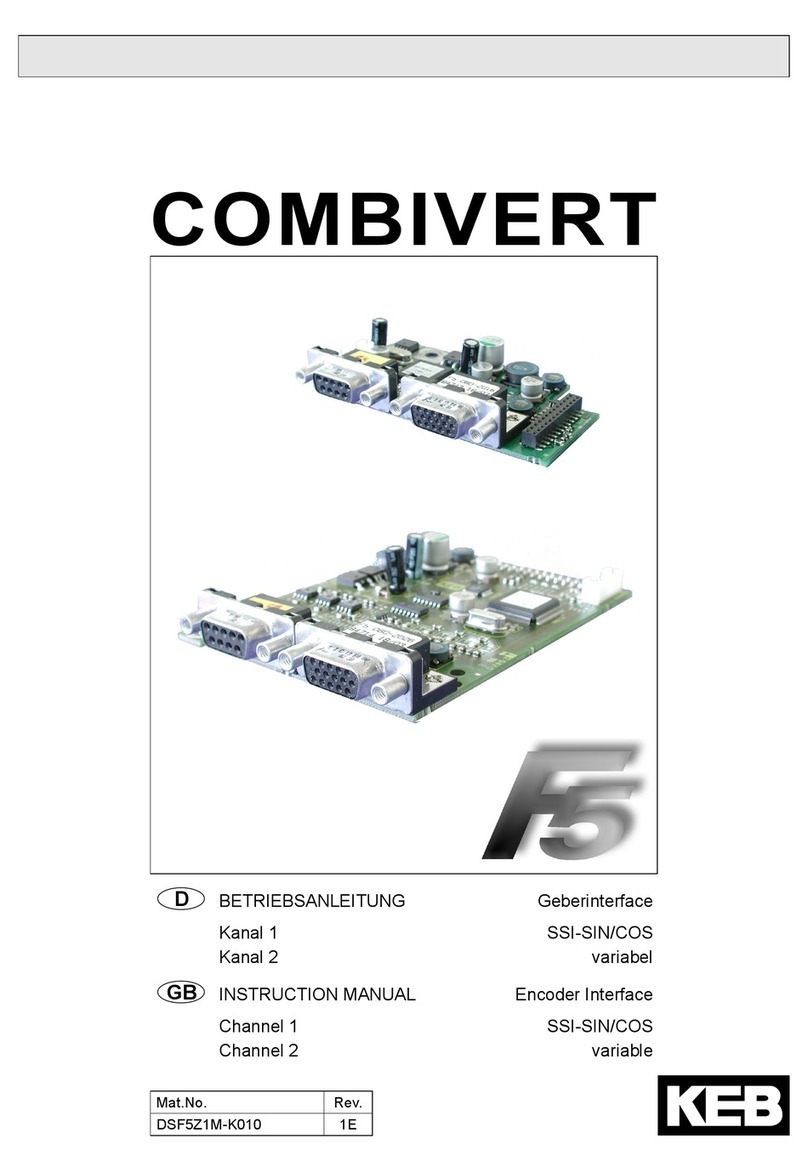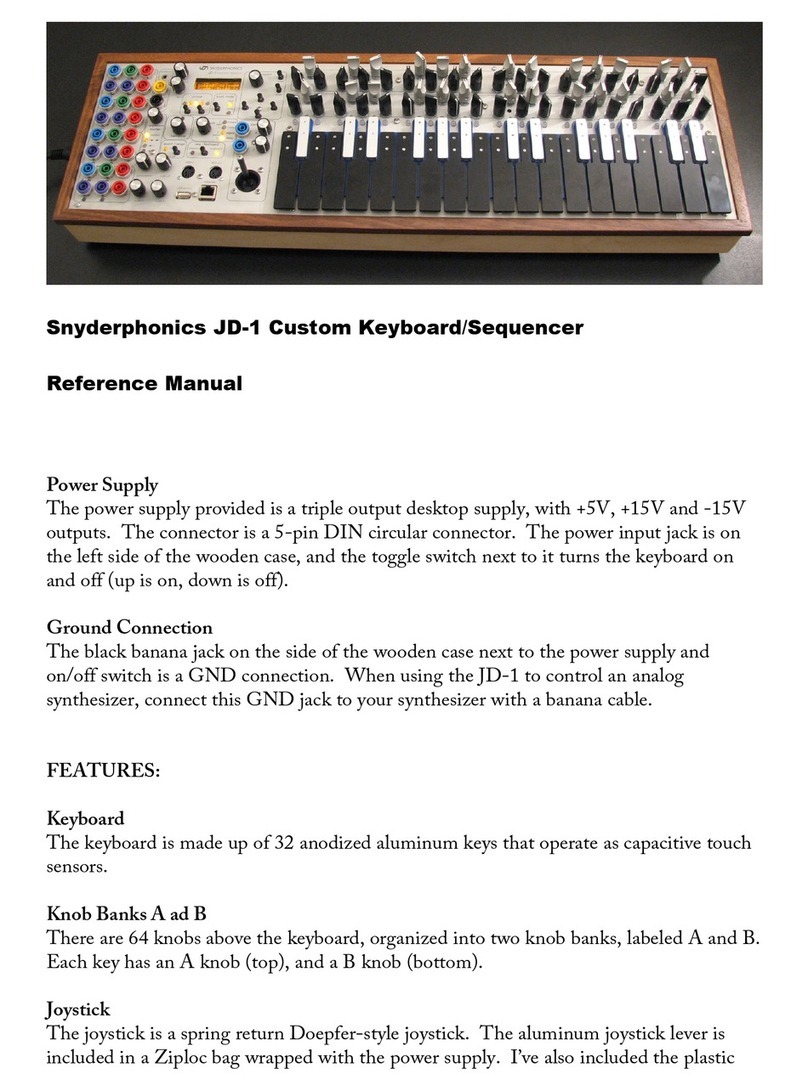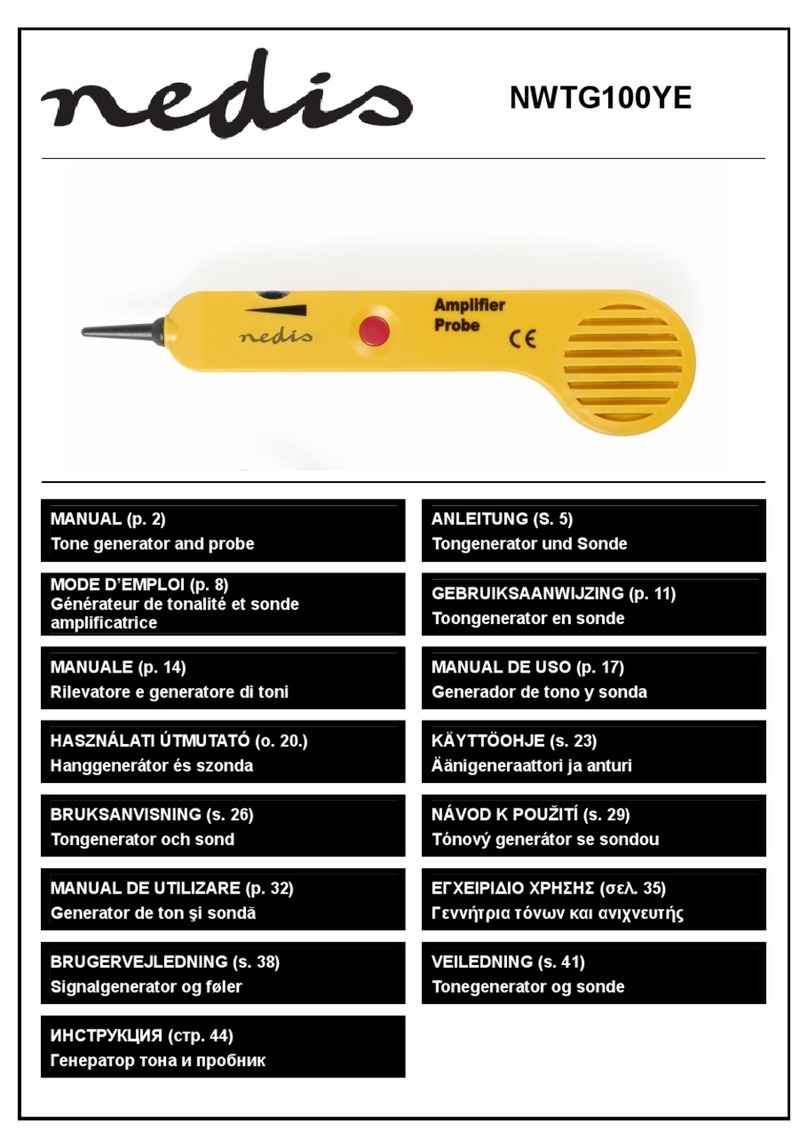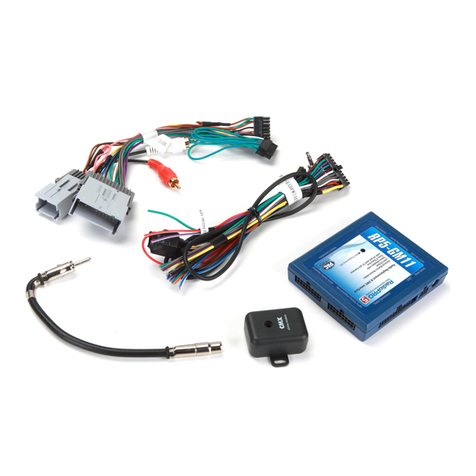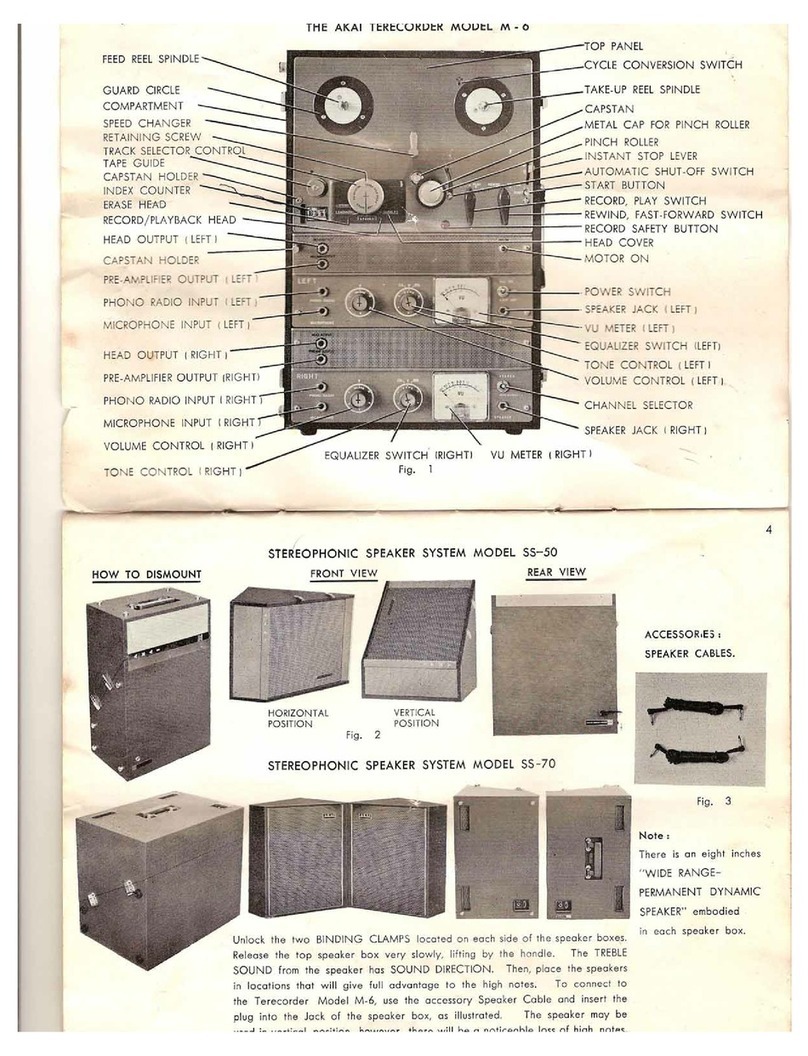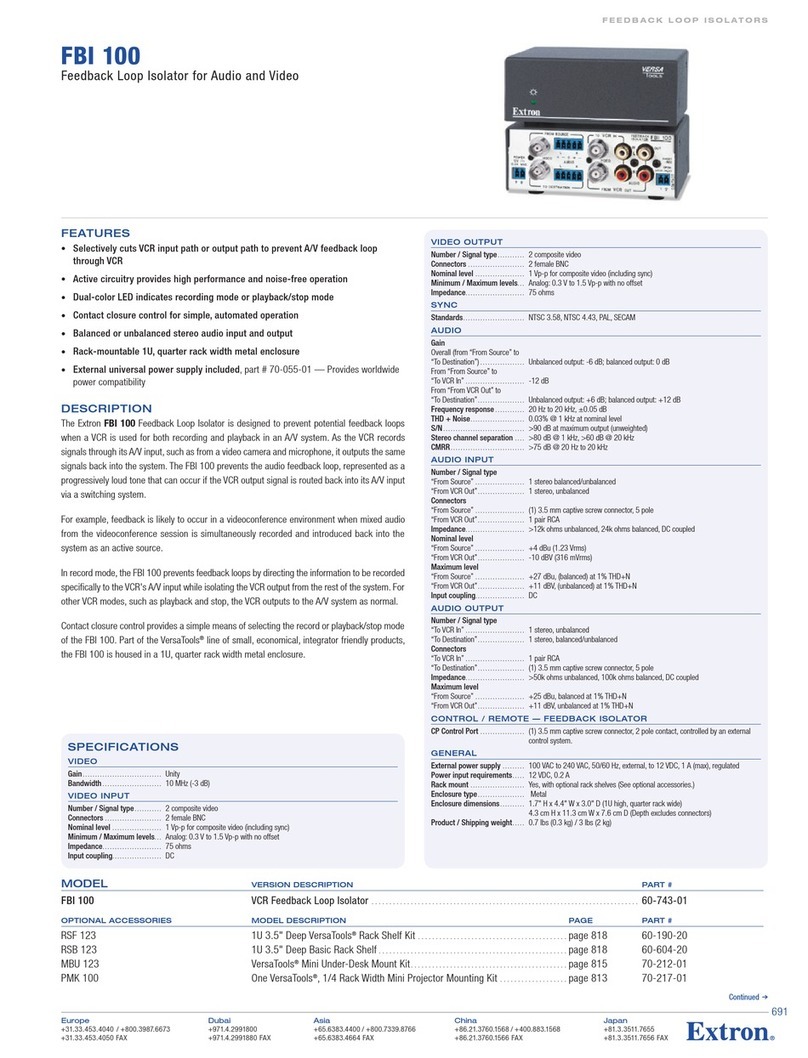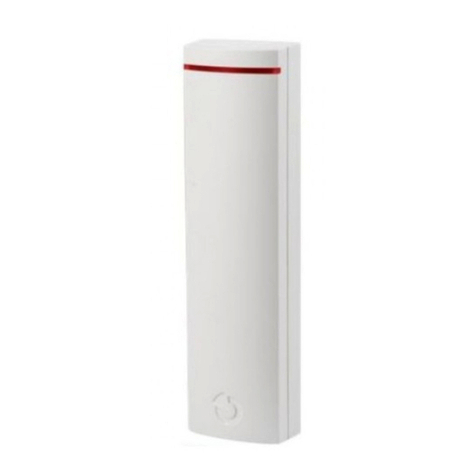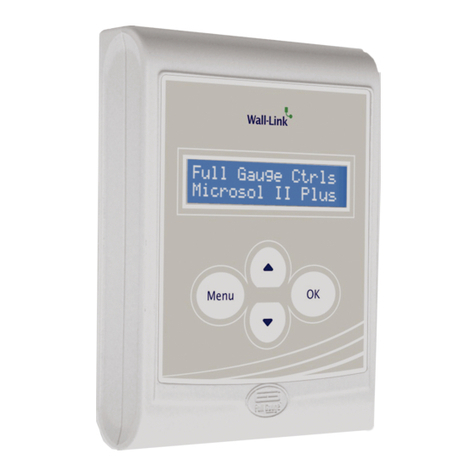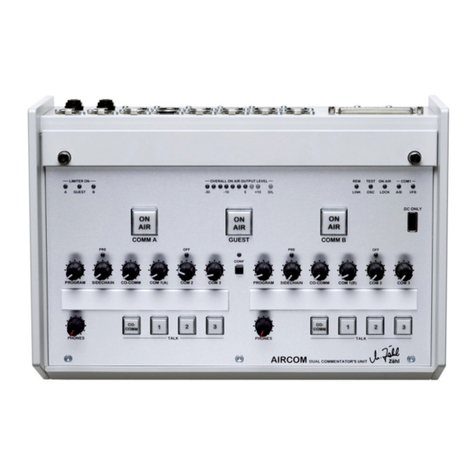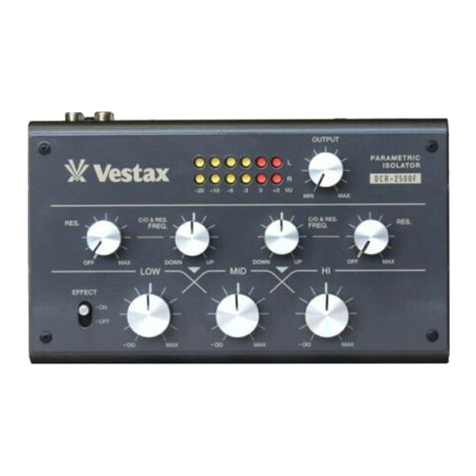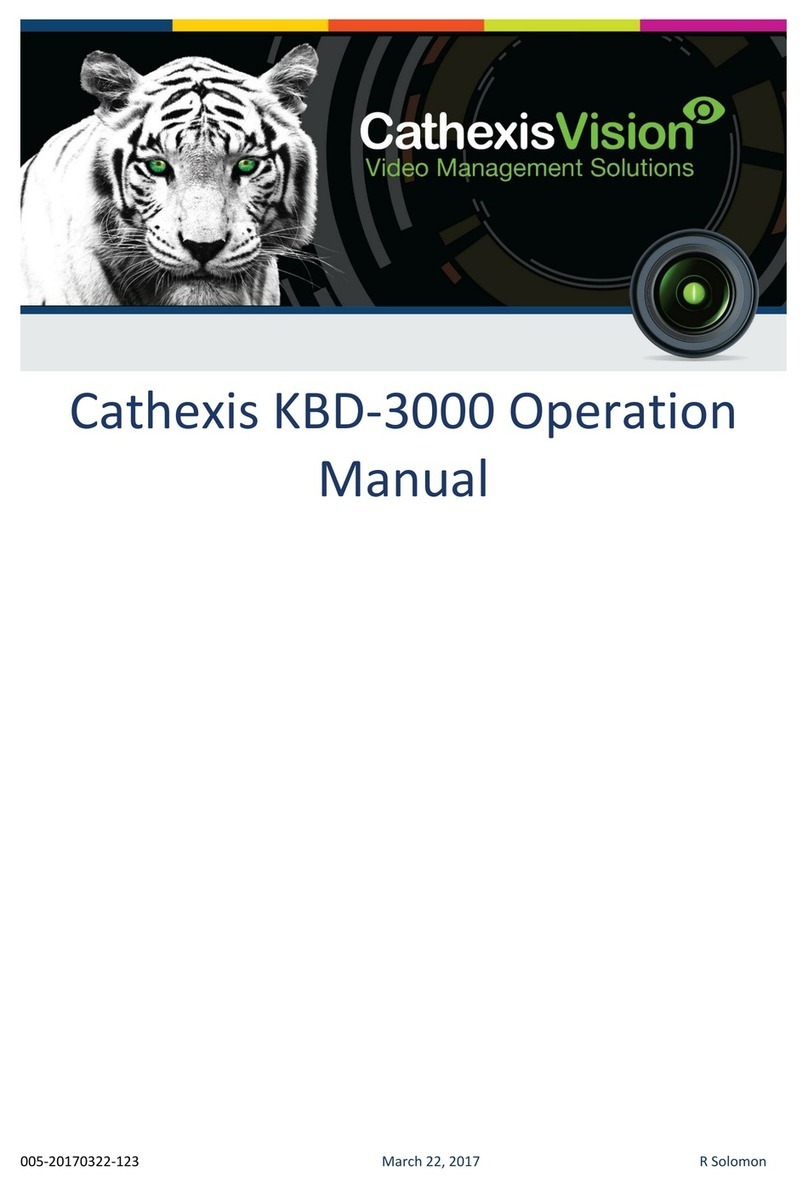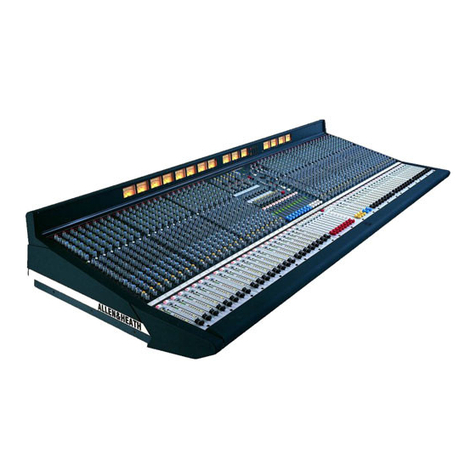Pro-face GP3000 Series User manual

Hardware Manual
GP3000 Series

1
Preface
Thank you for purchasing Pro-face's GP3000 Series Programmable Operator Interface (Hereafter referred to as the “GP
unit”).
Before operating your GP unit, be sure to read this manual to familiarize yourself with the GP unit's operation procedures
and features.
©2005 Copyright Digital Electronics Corporation. All rights reserved.
Product names used in this manual are the trademarks / registered trademarks of their respective owners.
NOTICE
1. Copying this manual's contents, either in whole or in part, is prohibited without the express permission of Digital
Electronics Corporation, Japan.
2. The information contained in this manual is subject to change without notice.
3. If you should you find any errors or omissions in this document, please contact Digital Electronics Corporation to
report your findings.
4. Regardless of Clause 3 above, Digital Electronics Corporation shall not be held responsible for any damages,
losses or third-party damages resulting from the use of this product.

2
Essential Safety Precautions
All safety-related procedures stated in this document must be followed to operate the GP correctly and safely. Be sure to
read this and any related documents thoroughly to understand the correct operation and functions of the GP unit.
Safety Icons
Throughout this manual, these icons provide essential safety information for GP operation procedures requiring special
attention. These icons indicate the following levels of danger:
System Design
Indicates situations where severe bodily injury, death or major equipment damage
can occur.
Indicates situations where slight bodily injury or minor equipment damage can
occur.
Indicates actions or procedures that should NOT be performed.
Indicates actions or procedures that MUST be performed to ensure correct unit
operation.
Be sure to design your GP control system so that, in the event of a main power supply failure or a GP
accident, the user system’s overall safety integrity will be maintained. If this is not done, incorrect output
signals or a GP malfunction may cause an accident.
1) Interlock and other circuits designed to interrupt or oppose normal machine movement (such as
Emergency Stop, General Protection, and forward and reverse rotation), as well as those designed to
prevent machine damage (such as upper, lower, and traverse movement limit positioning) should all be
designed to be located outside of the GP.
2) When the GP generates a “Watchdog Timer Error,” GP operation will halt. Also, when Errors occur in
Input/Output control areas that the GP cannot detect, unexpected movement may occur in those areas.
Therefore, and to prevent unsafe machine movement, a “Failsafe Circuit” should be created which is
completely external to the GP.
For a failsafe circuit, refer to "7.2.5 Installation Precautions" (page 7-16).
3) If a problem arises with an external unit’s relay or transistor, causing an output (coil) to remain either
ON or OFF, a major accident can occur. To prevent this, be sure to set up external watchdog circuits
that will monitor vital output signals.

3
Design a circuit that will supply power to the GP unit’s I/O before starting up the GP. If the GP unit’s
internal program enters RUN mode prior to the I/O unit’s load control power turning ON, an incorrect
output (signal) or malfunction could cause an accident.
Design a user program that ensures the safety of the user’s system, in the event of a GP display or control
error, or either a data transmission error or power failure between the GP and a connected unit. These
types of problems can lead to an incorrect output (signal) or malfunction, resulting in an accident.
Do not make switches using the switches on the touch panels which may cause operator injury and
machine damage. An output may remain either ON or OFF and a major accident can occur. To prevent
this, set up circuits such as limiters that will monitor vital output signals. Design switches for important
operations to be performed by separate devices. An incorrect output or malfunction can occur and
thereby cause an accident.
Do not create GP touch panel switches to control machine safety operations, such as an emergency stop
switch. Install these switches as separate hardware switches, otherwise severe bodily injury or equipment
damage can occur.
Be sure to design your system so that a communication fault between the GP and its host controller will
not cause equipment to malfunction. This is to prevent any possibility of bodily injury or equipment
damage.
Do not use the GP as a warning device for critical alarms that can cause serious operator injury, machine
damage or can halt system operation. Critical alarm indicators and their control/activator units must be
designed using stand-alone hardware and/or mechanical interlocks.
Do not use the GP with aircraft control devices, aerospace equipment, central trunk data transmission
(communication) devices, nuclear power control devices, or medical life support equipment, due to these
devices' inherent requirements of extremely high levels of safety and reliability.
Be sure to design your system so that a communication fault between the GP and its host controller will
not cause equipment to malfunction. This is to prevent any possibility of bodily injury or equipment
damage.

4
Handling
Wiring
Maintenance
After the GP unit's backlight burns out the touch panel is still active, unlike the GP unit's "Standby Mode".
If the operator fails to notice that the backlight is burned out and touches the panel, a potentially
dangerous machine operation error can occur. Therefore, do not create GP unit touch panel switches that
may cause injury and/or equipment damage. If your GP unit's backlight suddenly turns OFF, use the
following steps to determine if the backlight is actually burned out.
1) If the GP unit's "Backlight Control" is not set and the screen has gone blank, your backlight is burned
out.
2) If the GP unit's "Backlight Control" is set to Standby Mode and the screen has gone blank, and touching
the screen or performing another input operation does not cause the display to reappear, your backlight
is burned out.
Do not disassemble or modify the GP unit. Doing so may cause a fire or an electric shock.
Do not operate the GP in an environment where flammable gases are present, since it may cause an
explosion.
To prevent electrical shock or equipment damage, unplug the GP unit's power cord from the power supply
prior to installing or wiring the GP.
After completing any GP wiring work, be sure the terminal block's protective plastic cover is reattached. If
this cover is not reattached, an electrical shock could easily occur.
To prevent an electric shock be sure to disconnect your GP unit's power cord from the power supply
before wiring the GP.
Do not use voltage beyond the GP unit's specified range. Doing so may cause a fire or an electric shock.
The cables connected to the GP should be secured by cable clamps to prevent weight or tension of the
cables added to the connectors or terminals.
The GP unit's wiring should be checked to confirm that both the operating voltage and wiring terminal
locations are correct. If either the voltage or the wiring terminal location is incorrect, it can cause a fire or
accident.
NEVER touch a live power terminal. Doing so could cause an electrical shock or a machine malfunction.
To prevent an electrical shock, unplug the GP unit's power cord before either cleaning the GP or attaching/
detaching the power terminal attachment screws.
When replacing the GP unit's backlight, be sure to unplug the unit's power cord to prevent an electrical
shock, and wear safety gloves to prevent burns.

5
Wiring Layout Precautions
Installation
Wiring
Maintenance
Do not connect or disconnect Host and GP unit communication cables while the GP is turned ON.
Do not replace the GP unit's battery yourself. The GP uses a lithium battery for backing up its internal
clock data and the battery may explode if it is replaced incorrectly. When replacement is required, please
contact your local GP distributor.
To prevent a GP unit malfunction due to excessive noise, isolate all GP input/output signal lines from all
power wiring or power cables via a separate wiring duct.
Be sure all cable connectors are securely attached to the GP unit. A loose connection may cause incorrect
input or output signals.
Be sure to ground the GP unit's FG wire separately from other equipment FG lines. Also, be sure to use a
grounding resistance of 100. or less and a 2mm2[0.0062inch2] or thicker wire, or your country's applicable
standard. Otherwise, electric shock or malfunctions may result.
Be sure to use only the designated torque to tighten the GP unit's terminal block screws. If these screws
are not tightened firmly, it may cause a short-circuit, fire or incorrect unit operation.
Be sure that metal particles and wiring debris do not fall inside the GP unit. They can cause a fire,
malfunction or incorrect unit operation.
Be sure to read the GP unit's manual carefully before performing program changes, entering forced
output, or using the RUN, STOP, or PAUSE commands while the GP is operating. Mistakes made when
using these items can cause machine accidents or damage.
Be sure the electricity is turned OFF before attaching or detaching an I/O unit. If the electricity is ON when
an I/O unit is attached or detached, damage or malfunction to the I/O unit may occur.
Be sure to turn the GP unit's CF Card ACCESS switch OFF and confirm that the ACCESS lamp is not lit
prior to inserting or removing a CF Card. Otherwise, CF Card internal data may be damaged or lost.
Do not reset or turn the GP OFF, or insert or remove the CF Card while the GP unit's CF Card is being
accessed. Create special application screens to perform operations like turning power OFF, resetting the
GP or inserting or removing the CF Card.

6
Unit Disposal
General Safety Precautions
When the product is disposed of, it should be done so according to your country's regulations for similar
types of industrial waste.
Do not press on the GP unit's display with excessive force or with a hard object, since it can damage the
display. Also, do not press on the touch panel with a pointed object, such as the tip of a mechanical pencil
or a screwdriver, since doing so can damage the touch panel.
Do not install the GP where the ambient temperature exceeds the specified range. Doing so may cause a
unit malfunction.
To prevent abnormally high temperatures from occurring inside the GP, do not restrict or block the GP
unit's rear-face ventilation slots.
Do not operate the GP in areas where large, sudden temperature changes can occur. These changes can
cause condensation to form inside the GP, possibly causing it to malfunction.
Do not allow water, liquids or metal fragments to enter inside the GP unit's case, since they can cause
either a malfunction or an electric shock. The allowable pollution degree is 2.
Do not operate or store the GP in locations where it can be exposed to direct sunlight, high temperatures,
excessive dust, moisture or vibration.
Do not operate or store the GP where chemicals evaporate, or where chemicals are present in the air.
Corrosive chemicals: Acids, alkalines, liquids containing salt
Flammable chemicals: Organic Solvents
Do not use paint thinner or organic solvents to remove dirt or oil from the GP unit's surface. Instead, use a
soft cloth moistened with a diluted neutral detergent.
Do not use or store the GP in areas with direct sunlight, since the sun's ultraviolet rays may cause the
LCD's quality to deteriorate.
Do not store the GP in an area where the temperature is lower than that recommended in the GP unit's
specifications. Doing so may cause the LCD display's liquid to congeal, which can damage the LCD.
Also, if the storage area's temperature becomes higher than the specified level, the LCD's liquid may
become isotropic, causing irreversible damage to the LCD. Therefore, only store the GP in areas where
temperatures are within the GP unit's specifications.
After turning OFF the GP, be sure to wait a few seconds before turning it ON again. The GP may not
operate correctly if it is restarted too quickly.
Be sure to back up the GP screen data and logic programs in case they are lost accidentally.

7
LCD Panel Usage Precautions
• The LCD panel's liquid contains an irritant. If the panel is damaged and any of this liquid contacts your skin,
immediately rinse the area with running water for at least 15 minutes. If the liquid gets in your eyes, immediately
rinseyour eyes with running water for at least 15 minutes and consult a doctor.
• The GP unit's LCD screen may show unevenness in the brightness of certain images or at some contrast settings. This
is an LCD characteristic and not a product defect.
• The GP unit's LCD screen pixels may contain minute black and white-colored spots. This is an LCD characteristic and
not a product defect.
• The color displayed on the GP unit's LCD screen may appear different when seen from outside the specified viewing
angle. This is an LCD characteristic and not a product defect.
• When the same image is displayed on the GP unit's screen for a long period, an afterimage may appear when the image
is changed. If this happens, turn off the GP, wait 10 seconds and then restart the unit. This is an LCD characteristic and
not a product defect.
• To prevent an afterimage:
* Set the GP unit's display OFF feature when you plan to display the same screen image for a long period of time.
* Change the screen image periodically and try to not display the same image for a long period of time.

8
Information Symbols
This manual uses the following icons:
GP3000 Series Model Name Indication
Model name
A
G
P
3
*
**
-
*
1
-
***
-
****
Indicates a warning or a product limitation. Be sure to follow the instructions given with
this icon to ensure the safe operation of the GP.
Screen Editor Indicates the GP-Pro EX software.
PLC Abbreviation for Programmable Logic Controller.
Logic program Indicates a ladder program created with the GP-Pro Ex.
* Indicates useful or important supplemental information.
Contains additional or useful information.
Indicates pages containing related information.
A
3 GP-3300 series (5.7-inch): QVGA (320 x 240 dots)
4 GP-3400 series (7.5-inch): VGA (640 x 480 dots)
5 GP-3500 series (10.4-inch)*1: VGA (640 x 480 dots)
6 GP-3600 series (12.1-inch): SVGA (800 x 600 dots)
7 GP-3700 series (15-inch): XGA (1024 x 768 dots)
B
00 Standard machine
01 Low-cost machine
02
50 Multimedia machine
C
B Monochrome blue mode LCD
L Monochrome LCD
S STN color LCD
T TFT color LCD
DAF AC type power supply is used.
D24 DC type power supply is used.
E
Omitted Standard type
D81K DIO board type (sink type)
D81C DIO board type (source type)
FN1M FLEX NETWORK board type
*1 The GP-3500S series has the same dimensions as a 12.1-inch display unit.
SEE
ABCED

9
GP3000 Series Model Names
The term "GP3000" Series refers to the following GP model numbers:
Series Names Models
GP3000 series
GP-3300 series
AGP-3300L
AGP3300-L1-D24
AGP3300-L1-D24-D81K
AGP3300-L1-D24-D81C
AGP3300-L1-D24-FN1M
AGP-3300S AGP3300-S1-D24
AGP3300-S1-D24-D81K
AGP3300-S1-D24-D81C
AGP-3300T
AGP3300-T1-D24
AGP3300-T1-D24-D81K
AGP3300-T1-D24-D81C
AGP3300-T1-D24-FN1M
AGP-3301L AGP3301-L1-D24
AGP-3301S AGP3301-S1-D24
AGP-3302B AGP3302-B1-D24
GP-3400 series
AGP-3400S AGP3400-S1-D24
AGP3400-S1-D24-D81K
AGP3400-S1-D24-D81C
AGP-3400T
AGP3400-T1-D24
AGP3400-T1-D24-D81K
AGP3400-T1-D24-D81C
AGP3400-T1-D24-FN1M
AGP-3450T AGP3450-T1-D24
GP-3500 series
AGP-3500L AGP3500-L1-D24
AGP3500-L1-D24-D81C
AGP-3500S
AGP3500-S1-AF
AGP3500-S1-AF-D81K
AGP3500-S1-AF-D81C
AGP3500-S1-D24
AGP3500-S1-D24-D81K
AGP3500-S1-D24-D81C
AGP-3500T
AGP3500-T1-AF
AGP3500-T1-AF-D81K
AGP3500-T1-AF-D81C
AGP3500-T1-AF-FN1M
AGP3500-T1-D24
AGP3500-T1-D24-D81K
AGP3500-T1-D24-D81C
AGP3500-T1-D24-FN1M
AGP-3550T AGP3550-T1-AF
GP-3600 series AGP-3600T
AGP3600-T1-AF
AGP3600-T1-AF-D81K
AGP3600-T1-AF-D81C
AGP3600-T1-AF-FN1M
AGP3600-T1-D24
AGP3600-T1-D24-D81K
AGP3600-T1-D24-D81C
AGP3600-T1-D24-FN1M
AGP-3650T AGP3650-T1-AF
GP-3700 series AGP-3750T AGP3750-T1-AF
AGP3750-T1-D24

10
Package Contents
The following items are included in the GP unit's package. Before using the GP, please check that all items listed here
are present.
This unit has been carefully packed, with special attention to quality. However, should you find anything damaged or
missing, please contact your local GP distributor immediately.
GP Unit: 1 Installation Guide: 1 Installation Gasket: 1 Installation Fasteners:
4 per set
(Attached to the GP
unit) (GP-3700 series only:
4 x 2 sets)
DC Power Connector: 1
(Use for GP-3300/3400 series)
(Attached to the GP unit for
GP-3300 series)
(Use for GP-3500/3600/3700
series)
(Attached to the GP unit)
USB Cable Clamp (1 port): 1 set
Holder: 1, Clamp: 1(GP-3300 series only)
USB Cable Clamp (2 port): 1 set
Holder: 1, Cover : 2
(GP-3400/3500/3600/3700 series only)
AUX Connector: 1 RCA-BNC Convertor: 1
(GP-3400/3500/3600/3700
series only)
(Attached to the GP unit for
GP-3500/3600/3700 series)
(GP-3∗50series only)
DIO Connector 1, Installation Guide 1 FLEX NETWORK Connector 1, Installation Guide 1
(DIO board type only) (FLEX NETWORK board type
only)
Installation
Guide

11
UL/c-UL/CSA Approval
The following units are UL/c-UL/CSA listed products.
(UL File No.E220851, UL File No.E182139, CSA File No.219866)
*1 Additional four digits at the end of the model name do not affect the registration model No. For
example, AGP3300-L1-D24 and AGP3300-L1-D24-D81K are approved for the same UL/c-UL/CSA
registration model No. of 3280007-03.
This product conforms to the following standards:
• UL508 Industrial Control Equipment
• UL1604 Electrical Equipment for use in Class I and II, Division 2, and Class III Hazardous
(classified) locations.
• CSA-C22.2 No.14-M95 Industrial Control Equipment
• CSA-C22.2 No.213-M1987 Non-incendive Electrical Equipment for Use in Class I, Division 2 Hazardous Locations.
The following units are UL/c-UL listed products. (UL File No.E171486, UL File No.E231702)
*1 Additional four digits at the end of the model name do not affect the registration model No. For
example, AGP3500-S1-AF and AGP3500-S1-AF-D81K are approved for the same UL/c-UL
registration model No. of 3280024-21.
Product Model No.*1 UL/c-UL/CSA Registration Model No.
AGP3300-L1-D24-∗∗∗∗ 3280007-03
AGP3300-S1-D24-∗∗∗∗ 3280007-02
AGP3300-T1-D24-∗∗∗∗ 3280007-01
AGP3301-L1-D24 3280007-13
AGP3301-S1-D24 3280007-12
AGP3302-B1-D24 3280007-24
AGP3400-T1-D24-∗∗∗∗ 3280035-01
AGP3400-S1-D24-∗∗∗∗ 3280035-02
AGP3450-T1-D24 3280035-31
Product Model No.*1 UL/c-UL Registration Model No.
AGP3500-S1-AF-∗∗∗∗ 3280024-21
AGP3500-T1-AF-∗∗∗∗ 3280035-45
AGP3550-T1-AF 3280035-75
AGP3600-T1-AF-∗∗∗∗ 3280024-13
AGP3650-T1-AF 3280024-11
AGP3750-T1-AF 3280024-01

12
This product conforms to the following standards:
• UL60950-1 Information Technology Equipment - Safety - Part 1
• UL1604 Electrical Equipment for use in Class I and II, Division 2, and Class III Hazardous
(classified) locations.
• CAN/CSA-C22.2 No.60950-1-03 (c-UL approval)
Information Technology Equipment - Safety - Part 1
• CSA-C22.2 No.213-M1987 (c-UL approval)
Non-incendive Electrical Equipment for Use in Class I, Division 2 Hazardous Locations.
The following units are UL/c-UL/CSA listed products.
(UL File No.E220851, UL File No.E210412, CSA File No.219866)
*1 Additional four digits at the end of the model name do not affect the registration model No. For
example, AGP3500-T1-D24 and AGP3500-T1-D24-D81K are approved for the same UL/c-UL/CSA
registration model No. of 3280035-41.
This product conforms to the following standards:
• UL508 Industrial Control Equipment
• UL1604 Electrical Equipment for use in Class I and II, Division 2, and Class III Hazardous
(classified) locations.
• CSA-C22.2 No.14-M95 Industrial Control Equipment
• CSA-C22.2 No.213-M1987 Non-incendive Electrical Equipment for Use in Class I, Division 2 Hazardous Locations.
<Cautions>
Be aware of the following items when building the GP into an end-use product:
• The GP unit's rear face is not approved as an enclosure. When building the GP unit into an end-use product, be sure to
use an enclosure that satisfies standards as the end-use product's overall enclosure.
• The GP unit must be used indoors only.
• Install and operate the GP with its front panel facing outwards.
Product Model No.*1 UL/c-UL/CSA Registration Model No.
AGP3500-L1-D24-∗∗∗∗ 3280024-32
AGP3500-S1-D24-∗∗∗∗ 3280024-22
AGP3500-T1-D24-∗∗∗∗ 3280035-41
AGP3600-T1-D24-∗∗∗∗ 3280024-14
AGP3750-T1-D24 3280024-02

13
• If the GP is mounted so as to cool itself naturally, be sure to install it in a vertical panel. Also, it's recommended that
the GP should be mounted at least 100 mm away from any other adjacent structures or machine parts. The temperature
must be checked on the final product in which the GP is installed.
• Serial Interface (COM2) is not Limited Power Source.
<UL1604/CSA-C22.2, No.213 - Compliance and Handling Cautions>
(1) Power and input/output wiring must be in accordance with Class I, Division 2 wiring methods - Article
501-4(b) of the National Electrical Code, NFPA 70 within the United States, and in accordance with
Section 18-152 of the Canadian Electrical Code for units installed within Canada.
(2) Suitable for use in Class I, Division 2, Groups A, B, C, and D Hazardous Locations, or Non-Hazardous
Locations.
(3) WARNING: Explosion hazard-substitution of components may impair compliance to Class I, Division 2
(4) WARNING: Explosion hazard-when in hazardous locations, turn the power OFF before replacing or
wiring modules.
(5) WARNING: Explosion hazard-confirm that the power supply has been turned OFF before disconnecting
equipment, or confirm that the location is not subject to the risk of explosion.
(6) WARNING: Explosion hazard-do not disconnect equipment unless power has been switched off or the
area is known to be Non-Hazardous.
(7) In the case of use in Hazardous Locations, be sure to check that the externally connected unit and each
interface have been fixed with screws and locked. In Hazardous Locations, it's impossible to insert or
pull the cable from the applicable port. Be sure to check that the location is Non-Hazardous before
inserting or pulling it.

14
CE Marking
The following units are CE marked products complying with the EMC Directive.*1
They comply with EN55011 Class A, EN61000-6-2.
*1 Additional four digits at the end of the model name do not affect compliance. For example, AGP3500-
T1-D24 and AGP3500-T1-D24-D81K are CE marked products complying with the same EMC
Directive.
The following units are CE marked products complying with both the EMC Directive and low-voltage directive.*1
They comply with EN55011 Class A, EN61000-6-2 and EN60950-1.
*1 Additional four digits at the end of the model name do not affect compliance. For example, AGP3500-
T1-AF and AGP3500-T1-AF-D81K are CE marked products complying with the same EMC Directive
and low-voltage directive.
AGP3300-L1-D24-∗∗∗∗ AGP3300-S1-D24-∗∗∗∗ AGP3300-T1-D24-∗∗∗∗
AGP3301-L1-D24 AGP3301-S1-D24 AGP3302-B1-D24
AGP3400-S1-D24-∗∗∗∗ AGP3400-T1-D24-∗∗∗∗ AGP3450-T1-D24
AGP3500-L1-D24-∗∗∗∗ AGP3500-S1-D24-∗∗∗∗ AGP3500-T1-D24-∗∗∗∗
AGP3600-T1-D24-∗∗∗∗ AGP3750-T1-D24
AGP3500-S1-AF-∗∗∗∗ AGP3500-T1-AF-∗∗∗∗ AGP3550-T1-AF
AGP3600-T1-AF-∗∗∗∗ AGP3650-T1-AF
AGP3750-T1-AF

15
Contents
Preface...................................................................................................................... 1
Essential Safety Precautions..................................................................................... 2
Information Symbols.................................................................................................. 8
GP3000 Series Model Name Indication.................................................................... 8
GP3000 Series Model Names................................................................................... 9
Package Contents................................................................................................... 10
UL/c-UL/CSA Approval.............................................................................................11
CE Marking.............................................................................................................. 14
Chapter 1 System Design
1.1 AGP-3300∗/3301∗and GP-3400/3500/3600/3700 Series..............................1-2
1.2 AGP-3302∗.....................................................................................................1-8
1.3 DIO Board Type............................................................................................ 1-11
1.4 FLEX NETWORK Board Type...................................................................... 1-11
1.5 Recommended Units ....................................................................................1-12
Chapter 2 Accessories
2.1 Accessories ....................................................................................................2-2
2.1.1 Serial Interface Item..............................................................................................2-2
2.1.2 USB Host Interface...............................................................................................2-3
2.1.3 CF Card Items ......................................................................................................2-3
2.1.4 Option Items .........................................................................................................2-4
2.1.5 Maintenance Items ...............................................................................................2-4
2.1.6 Expansion Unit......................................................................................................2-5
2.2 Optional Item for the DIO Board Type ............................................................2-6
2.2.1 Maintenance Items ...............................................................................................2-6
2.3 Optional Items for the FLEX NETWORK Board Type.....................................2-6
2.3.1 I/O Units................................................................................................................2-6
2.3.2 Analog Units..........................................................................................................2-7
2.3.3 Single-Axis Positioning Units................................................................................2-7
2.3.4 High-Speed Counter Unit......................................................................................2-7
2.3.5 Optional Items.......................................................................................................2-7
2.3.6 Maintenance Items ...............................................................................................2-8

16
Chapter 3 Part Names and Functions
3.1 GP-3300 Series.............................................................................................. 3-2
3.2 GP-3400 Series.............................................................................................. 3-5
3.3 GP-3500 Series.............................................................................................. 3-8
3.4 GP-3600 Series.............................................................................................3-11
3.5 GP-3700 Series............................................................................................ 3-14
Chapter 4 Specifications
4.1 GP-3300 Series.............................................................................................. 4-2
4.1.1 General Specifications..........................................................................................4-2
4.1.2 Performance Specifications ..................................................................................4-4
4.1.3 Interface Specifications.........................................................................................4-7
4.1.4 Dimensions.........................................................................................................4-11
4.2 GP-3400 Series............................................................................................ 4-16
4.2.1 General Specifications........................................................................................4-16
4.2.2 Performance Specifications ................................................................................4-18
4.2.3 Interface Specifications.......................................................................................4-21
4.2.4 Dimensions.........................................................................................................4-24
4.3 GP-3500 Series............................................................................................ 4-28
4.3.1 General Specifications........................................................................................4-28
4.3.2 Performance Specifications ................................................................................4-31
4.3.3 Interface Specifications.......................................................................................4-34
4.3.4 Dimensions.........................................................................................................4-37
4.4 GP-3600 Series............................................................................................ 4-44
4.4.1 General Specifications........................................................................................4-44
4.4.2 Performance Specifications ................................................................................4-47
4.4.3 Interface Specifications.......................................................................................4-50
4.4.4 Dimensions.........................................................................................................4-53
4.5 GP-3700 Series............................................................................................ 4-57
4.5.1 General Specifications........................................................................................4-57
4.5.2 Performance Specifications ................................................................................4-60
4.5.3 Interface Specifications.......................................................................................4-63
4.5.4 Dimensions.........................................................................................................4-66
Chapter 5 DIO Connector
5.1 DIO Interface (Connector) .............................................................................. 5-2
5.2 Wiring to the DIO Connector...........................................................................5-6

17
Chapter 6 FLEX NETWORK Connector
6.1 FLEX NETWORK Specifications ....................................................................6-2
6.1.1 FLEX NETWORK Interface (Connector)...............................................................6-2
6.1.2 Flex Network Data Transfer Settings....................................................................6-3
6.2 Wiring to the FLEX NETWORK Connector.....................................................6-3
6.2.1 FLEX NETWORK Communication Cable.............................................................6-3
6.2.2 Wiring to the FLEX NETWORK Connector...........................................................6-4
Chapter 7 Installation and Wiring
7.1 Installation.......................................................................................................7-2
7.1.1 Installation Procedures .........................................................................................7-2
7.2 Wiring Precautions..........................................................................................7-8
7.2.1 Connecting the Power Cord..................................................................................7-8
7.2.2 Connecting the Power Supply ............................................................................7-13
7.2.3 Grounding...........................................................................................................7-14
7.2.4 Wiring Precautions..............................................................................................7-15
7.2.5 Installation Precautions.......................................................................................7-16
7.3 CF Card Insertion/Removal ..........................................................................7-19
7.3.1 Inserting the CF Card .........................................................................................7-20
7.3.2 Removing the CF Card.......................................................................................7-20
7.3.3 CF Card Handling...............................................................................................7-21
7.4 USB Cable Clamp (1 port) Attachment/Removal..........................................7-22
7.5 USB Cable Clamp (2 port) Attachment/Removal..........................................7-24
7.6 Attaching the AUX Connector.......................................................................7-26
Chapter 8 Maintenance
8.1 Cleaning the Display.......................................................................................8-2
8.2 Periodic Check Points.....................................................................................8-3
8.3 Replacing the Installation Gasket ...................................................................8-4
8.4 Replacing the Backlight .................................................................................. 8-6
8.4.1 AGP-3500T/3550T................................................................................................8-6
8.4.2 AGP-3500S.........................................................................................................8-11
8.4.3 AGP-3600T/3650T..............................................................................................8-15
8.4.4 AGP-3750T.........................................................................................................8-19

18
Other manuals for GP3000 Series
6
Table of contents
Other Pro-face Recording Equipment manuals

Pro-face
Pro-face ST3200 Series User manual
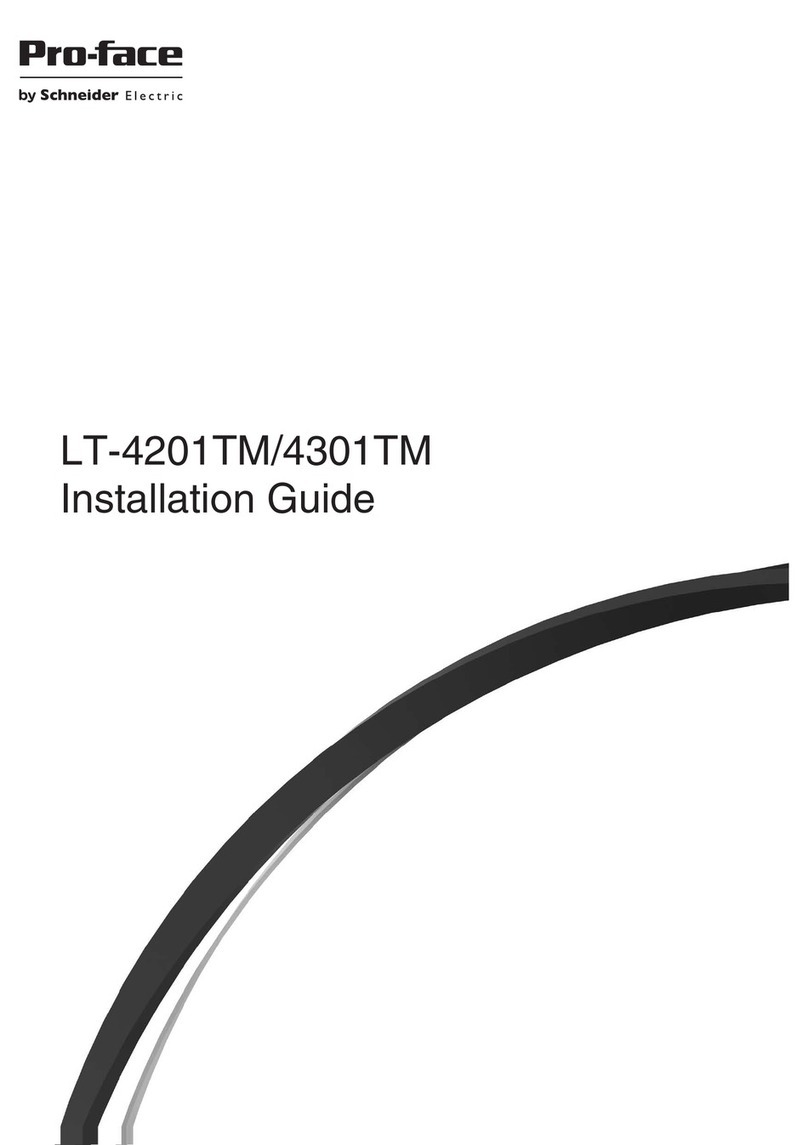
Pro-face
Pro-face LT-4201TM User manual
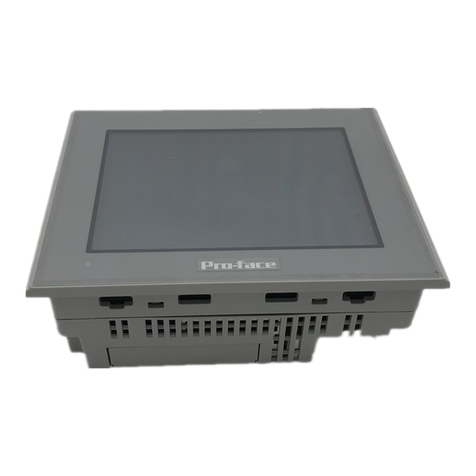
Pro-face
Pro-face ST3000 Series User manual
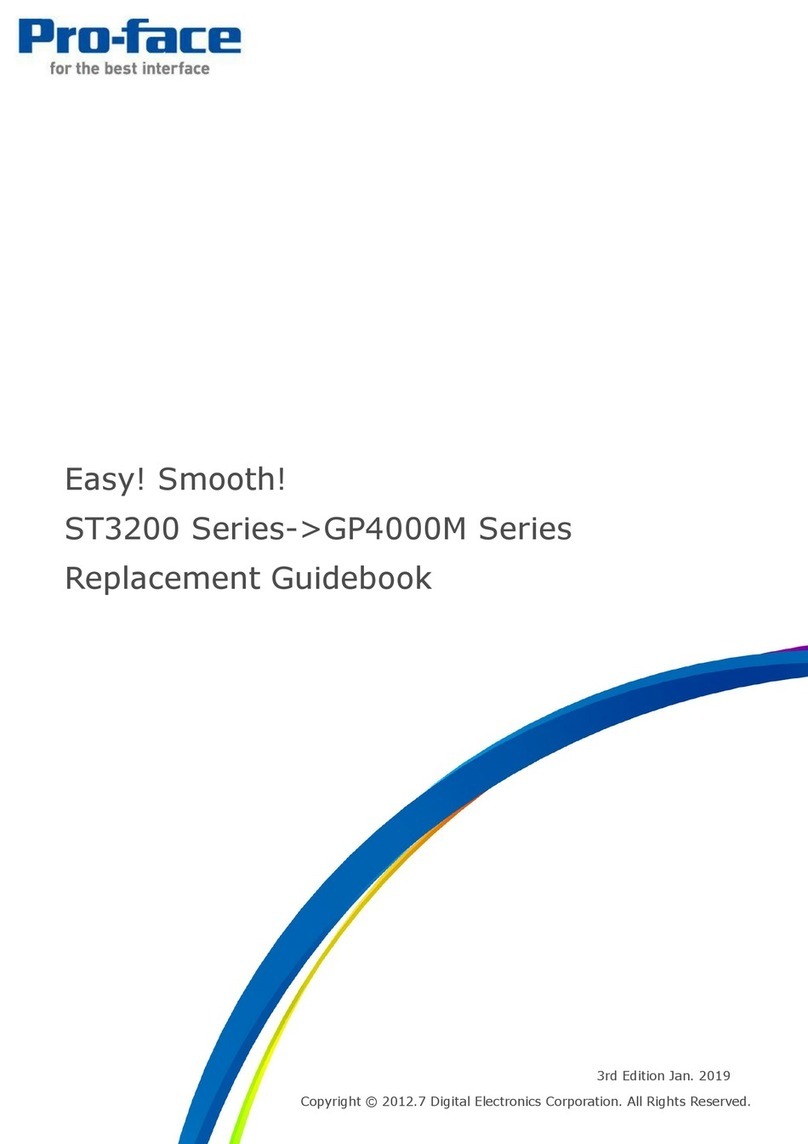
Pro-face
Pro-face ST3200 Series User manual
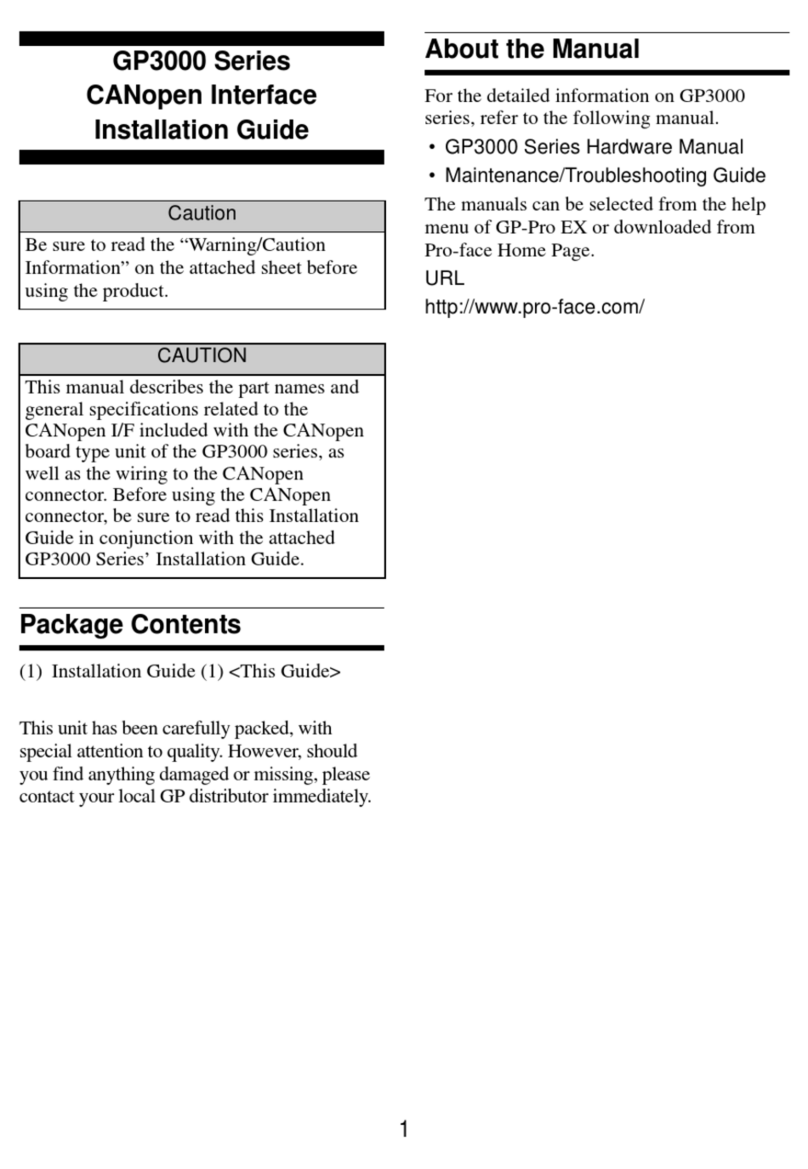
Pro-face
Pro-face GP3000 Series User manual
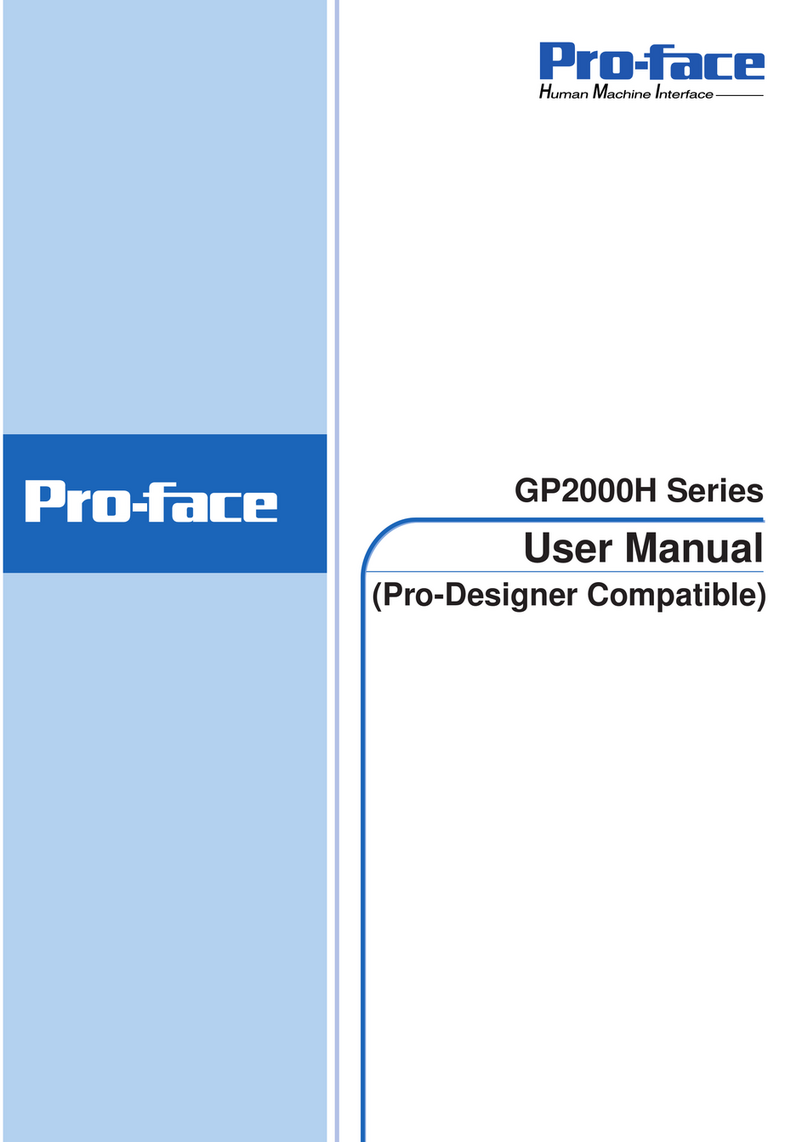
Pro-face
Pro-face GP2000H Series User manual
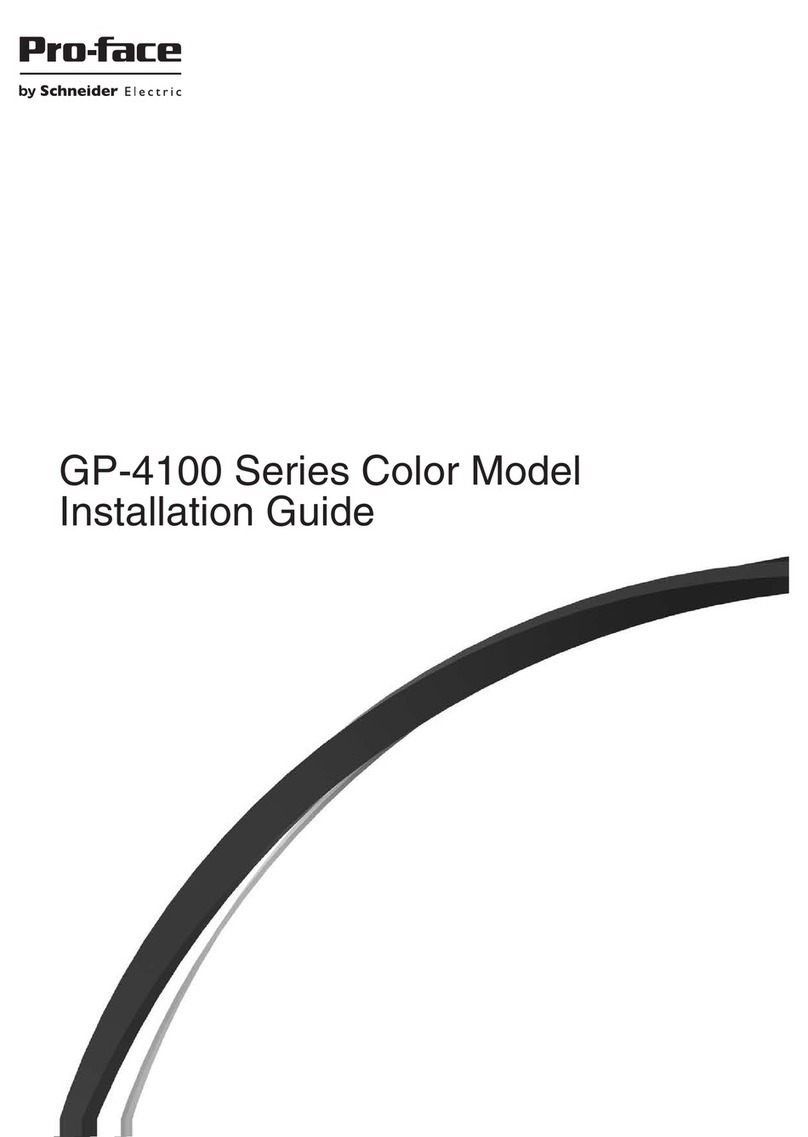
Pro-face
Pro-face GP-4114T User manual
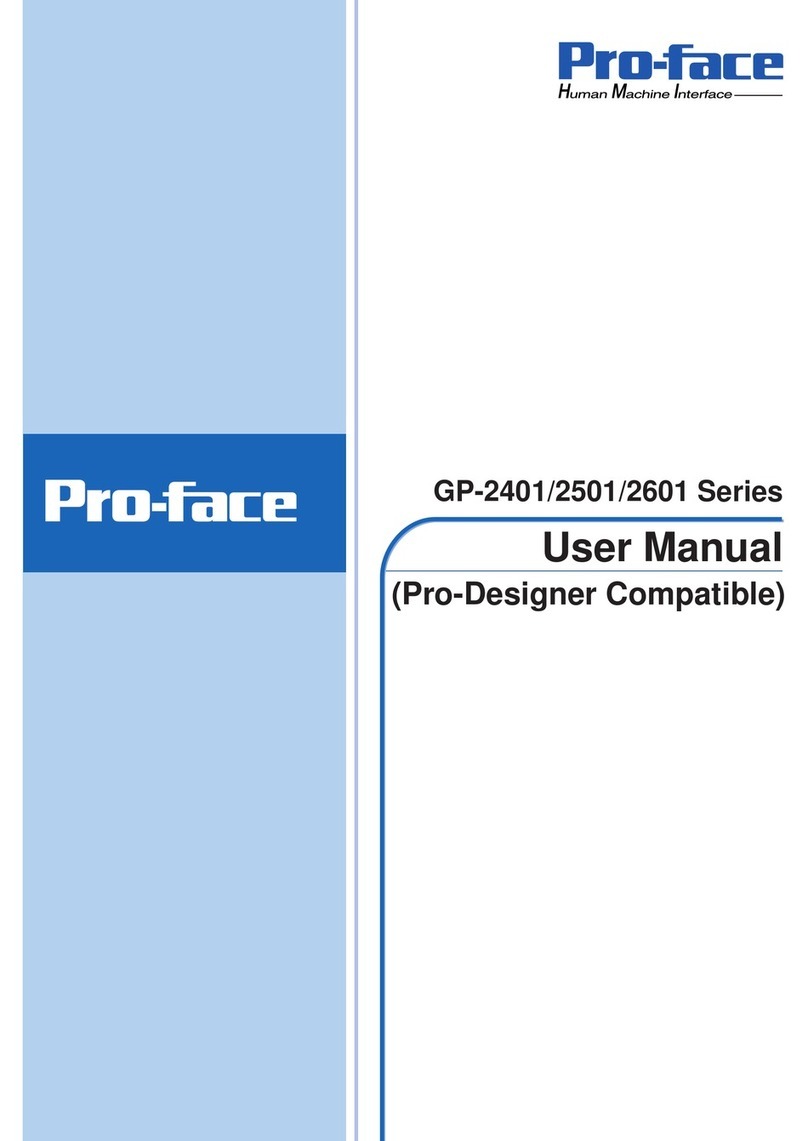
Pro-face
Pro-face GP-2401T User manual
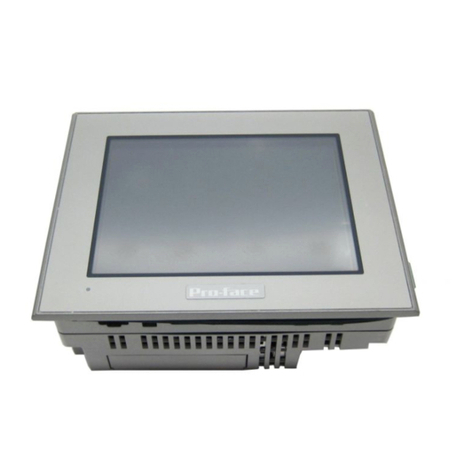
Pro-face
Pro-face AGP-3300 Series User manual

Pro-face
Pro-face GP-4100 series User manual

